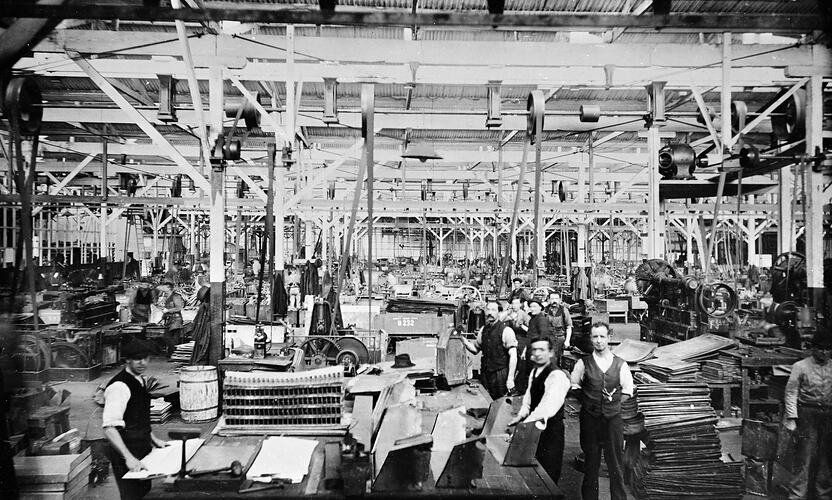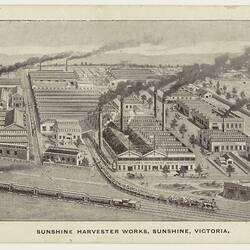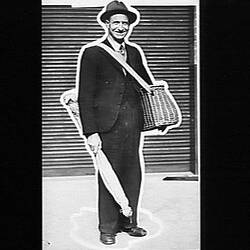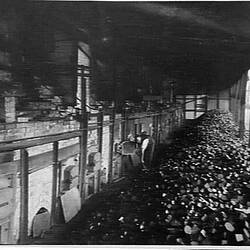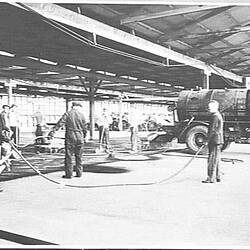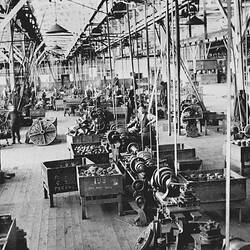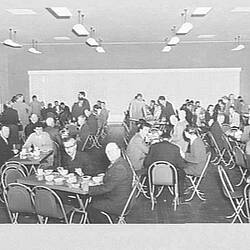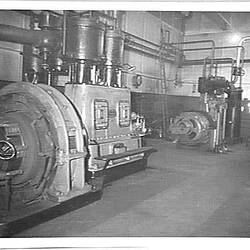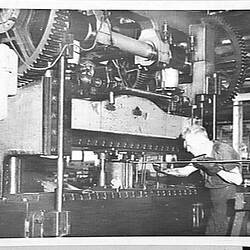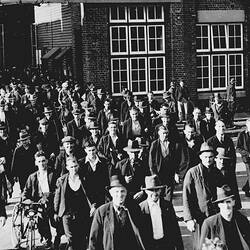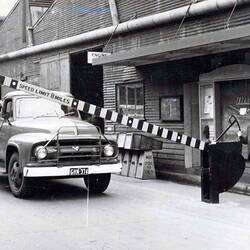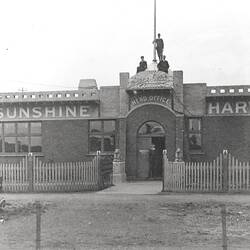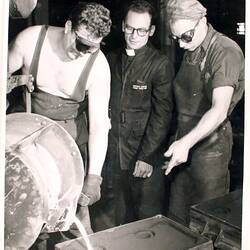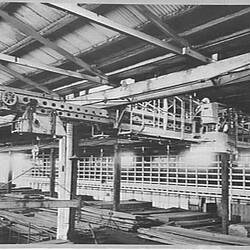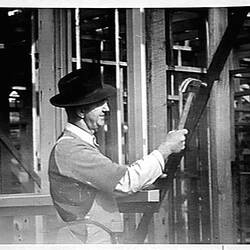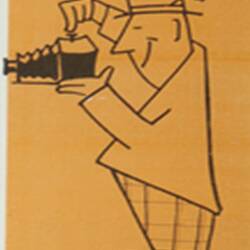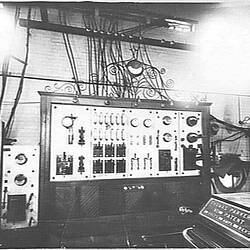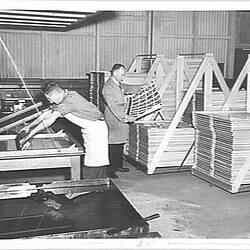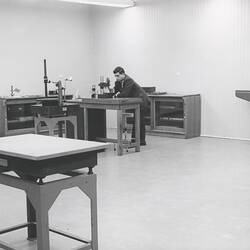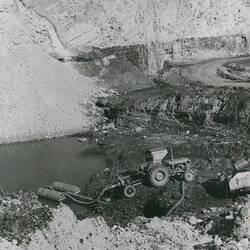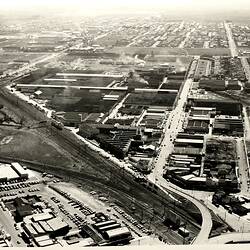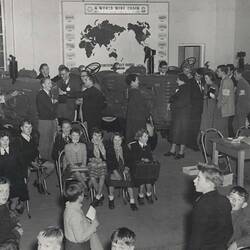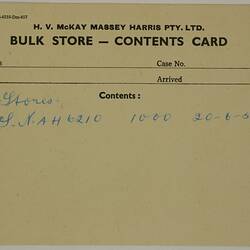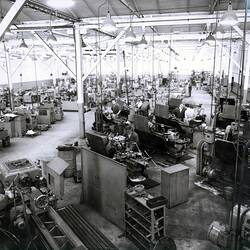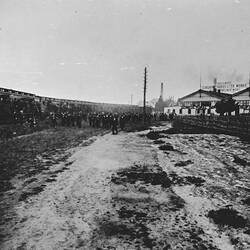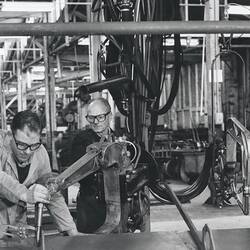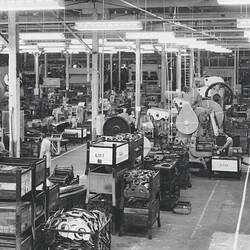Summary
Description of the Sunshine Harvester Works Sheet Iron Shop.
In this department, sheet iron was cut and shaped to produce parts for agricultural equipment such as binders, mowers, headers, harvesters, potato diggers, maize huskers, drills, milk machines and spray pumps. Work in the Sheet Iron Shop required a high degree of skill due to its difficult nature. Prior toWorld War II ordinary, galvanised iron was utilised in the Sheet Metal Shop. This was replaced with black iron due to costs.
The lack of protection against the high intensity noise produced in the Shop resulted in hearing issues for many workers. Sheet metal workers Clem Buckingham, Roy Roberts and George Higgins recall:
In those days there was probably 60 or 70 bench hands, and every one banging iron with mallets and hammers - riveting; and you can imagine all that in a small section and a big ten foot press, when it was stamping out you could hear it down the street. It'd go bang! And you've got people working next to it! [Faulkner, n.p]
The SheetIron Shop hired teenagers to work as 'dolly-boys'. Their role was to place rivets in the grain box of headers. The work was fast, loud and dangerous. Clem Buckingham, Roy Roberts and George Higgins remember the intensity of this work:
Most of the work done with the dolly was in the grain-box which was over the top of the wheel on the header, and all the grain went into the box ... The boy had to get in the box, surrounded by iron, finished with an iron roof, he had a little hole to get out of ... and he'd get a handful of rivets, he'd put a rivet in a hole, put the dolly on it, then the bloke outside - Bang! Bang! Bang! - with the hammer. Then while he was finishing off, the boy'd have to get the next one ready and of course, sometimes he might be a bit slow or just learning and the bloke outside'd go bang! And the boy'd have his finger on it... Most of us started as dolly-boys and we'd have to put in about 600 rivets in an eight-hour day, all day, over our heads, laying on our backs ... And this is the basis for a lot of industrial deafness ... In those early days when we'd come out and our ears were ringing at the end of the day being in a box all day. [Faulkner, n.p]
Bert Craddock spent ten years as shop foreman in the 1940s and 1950s. He was followed by George Kokkin and Clem Buckingham. Sub-foremen of the shop included George Thompson, Harry Long, Harry Fraser, Bill Gray, Jack Redrop, Harry Caddick and Bill McDonald.
- References
- Ray Browne, George Hales and Jim Learmonth (former Sunshine Harvester Works employees), personal recollections held at Museum Victoria, November 1999, October 2000 and October 2002.
- Faulkner, R (ed). 1986,Duty Nobly Done: Sunshine Harvester Diary, 1987. Melbourne's Living Museum of the West, Footscray.
More Information
-
Keywords
Metal Presses, Factory Workers, Occupational Health & Safety, Working Conditions
-
Authors
-
Article types
